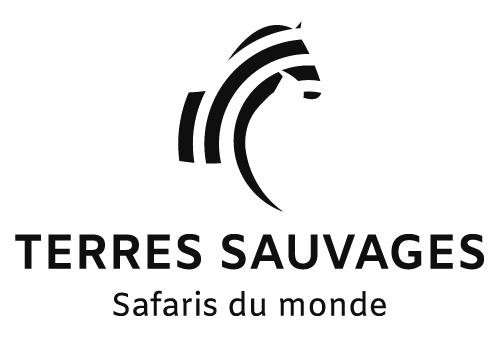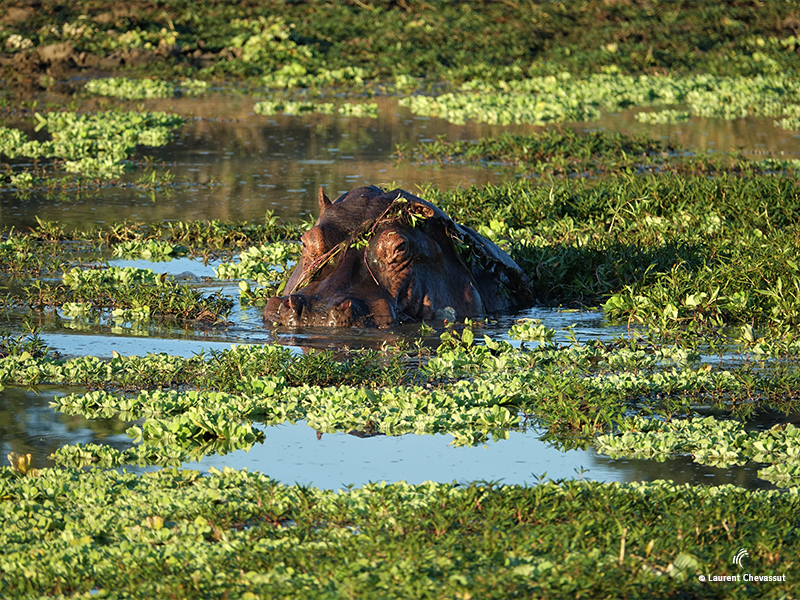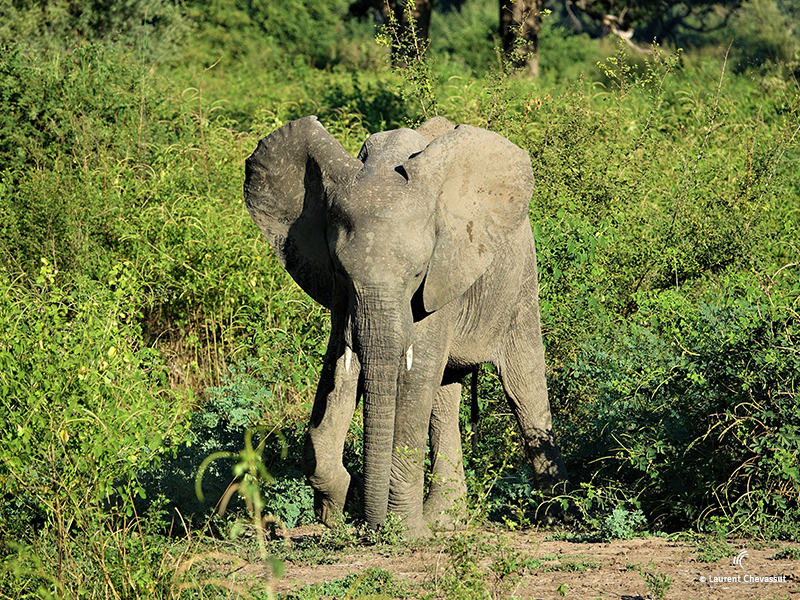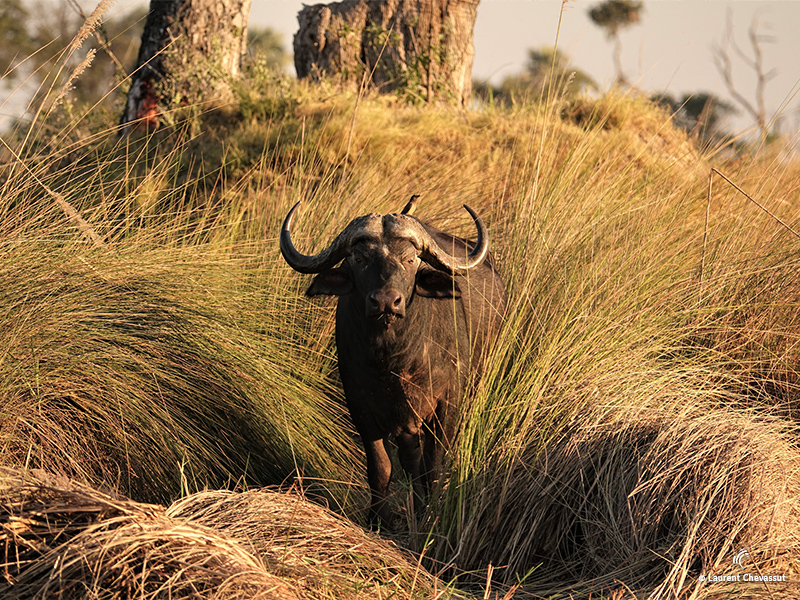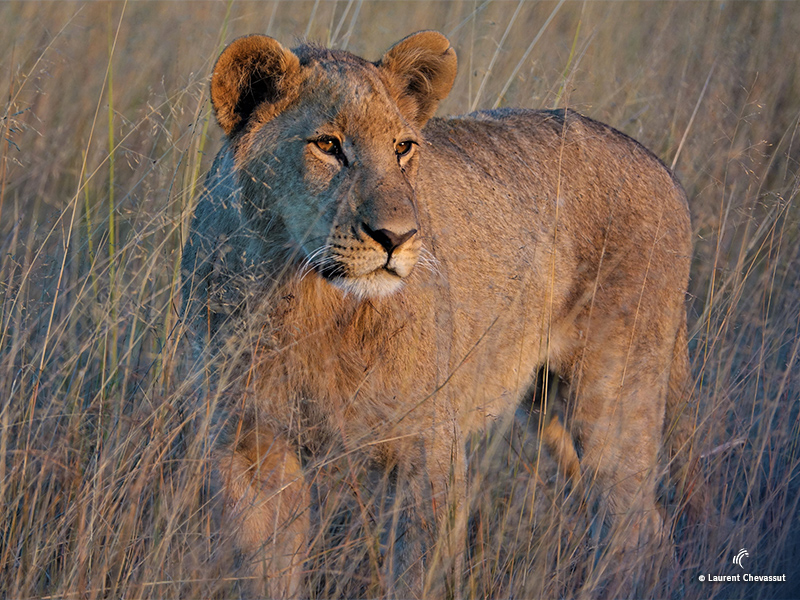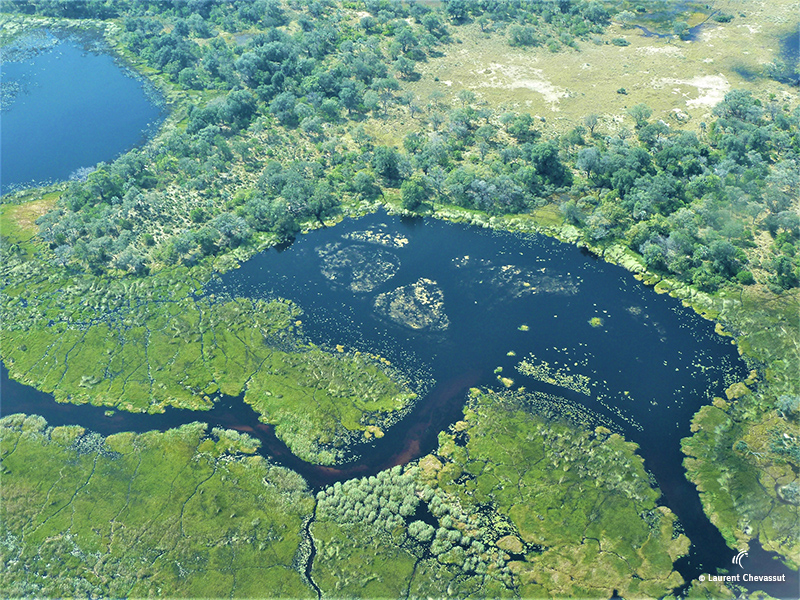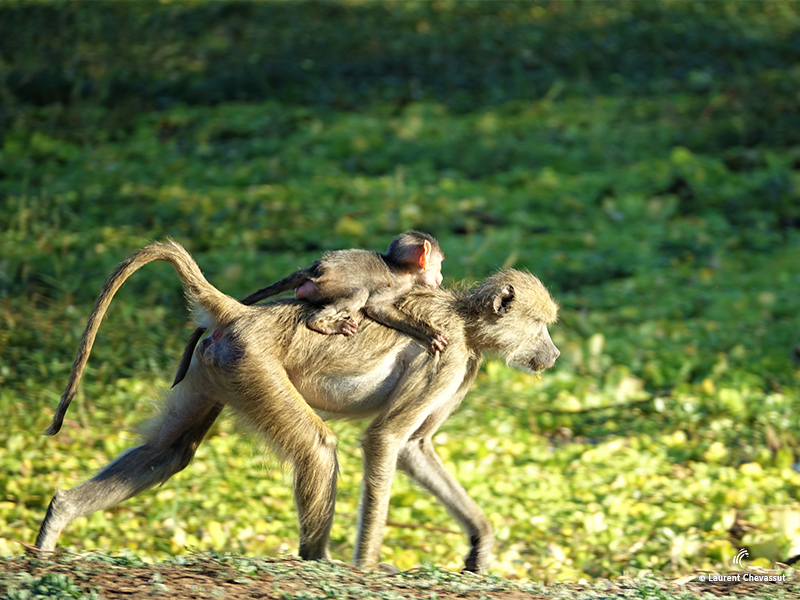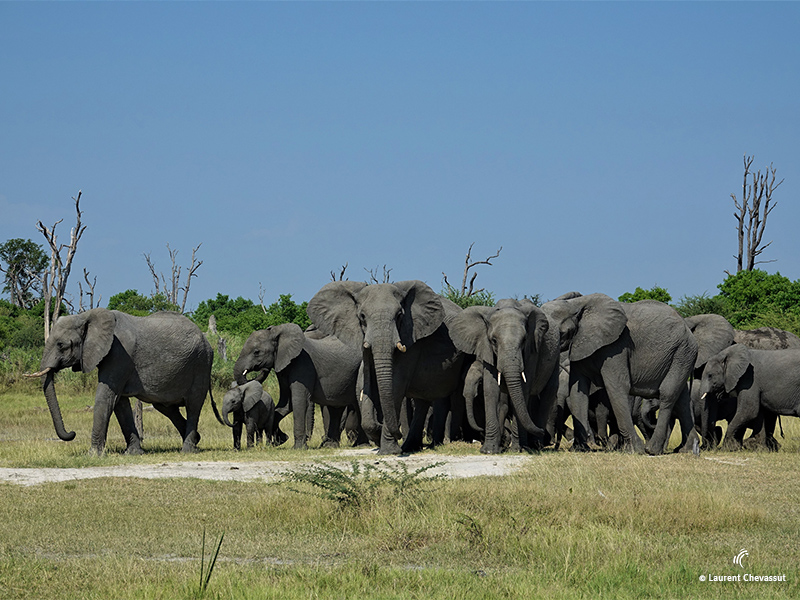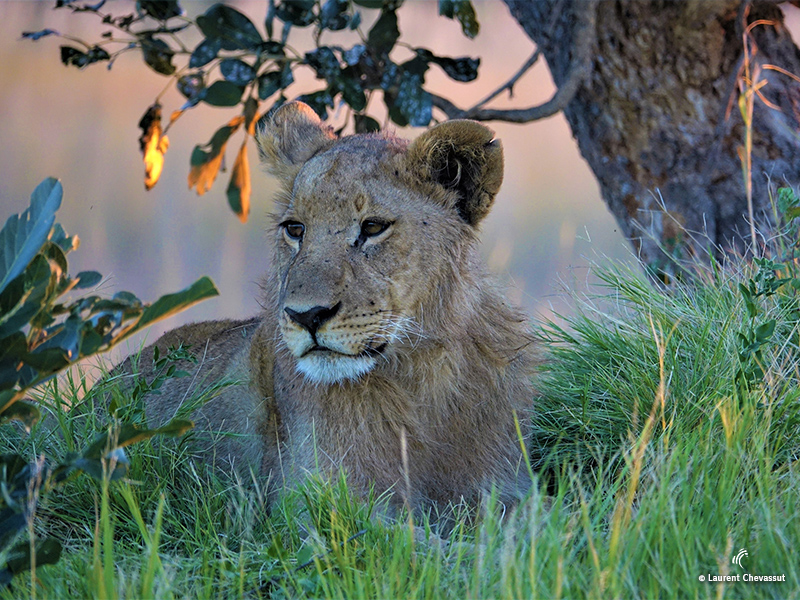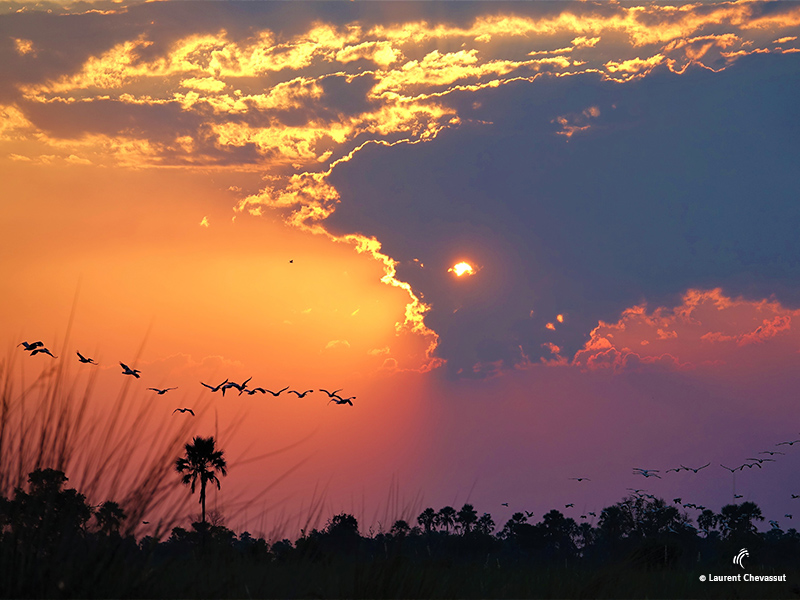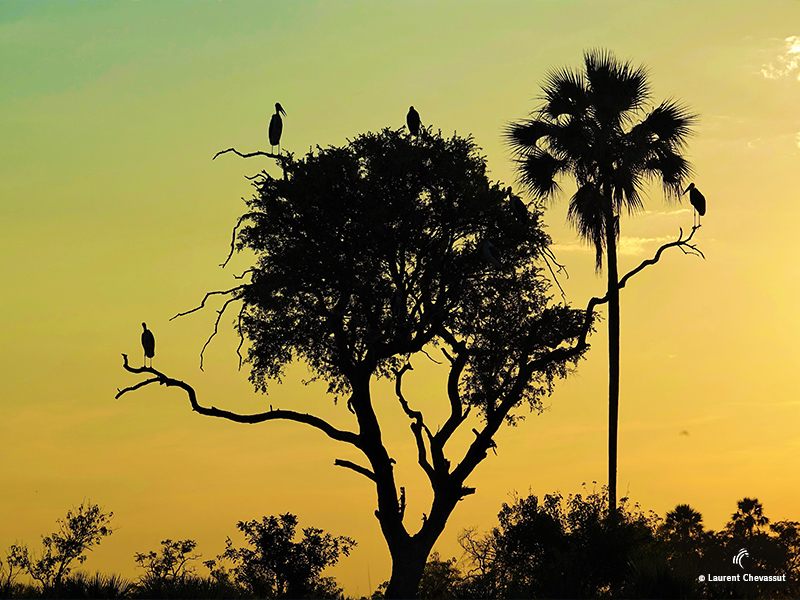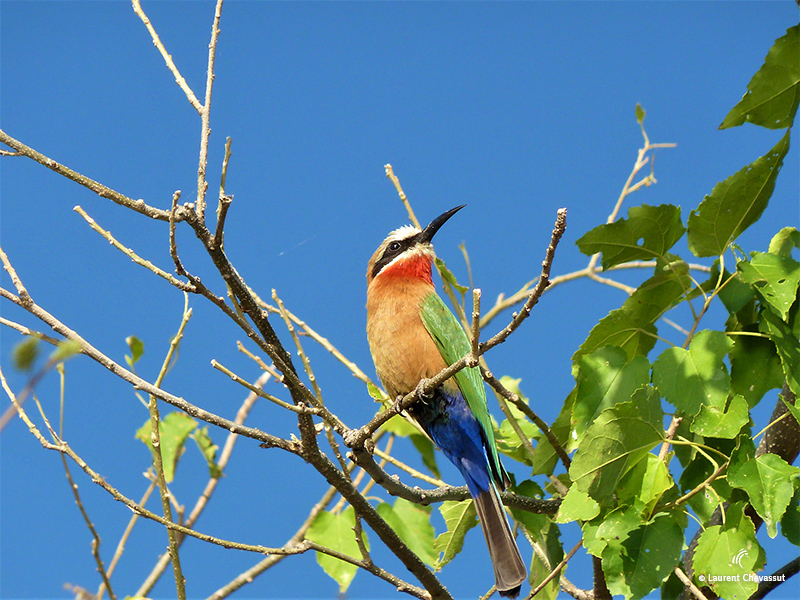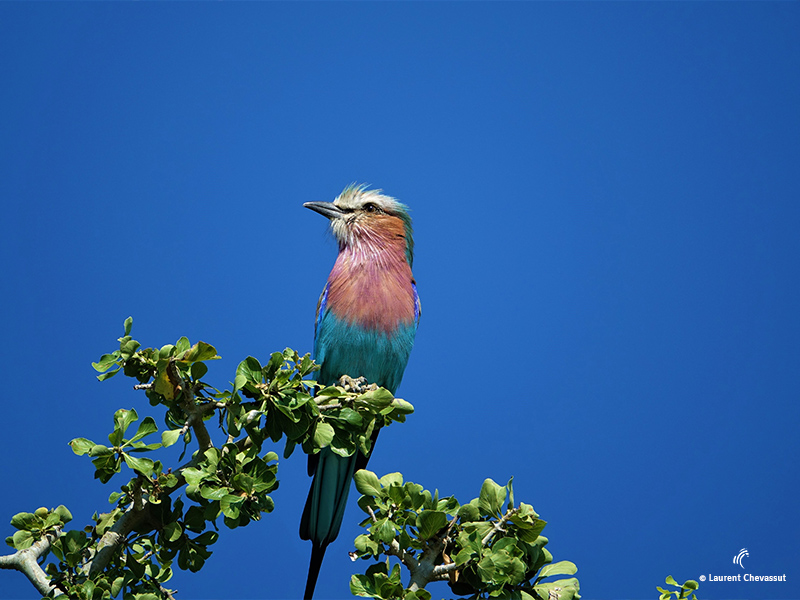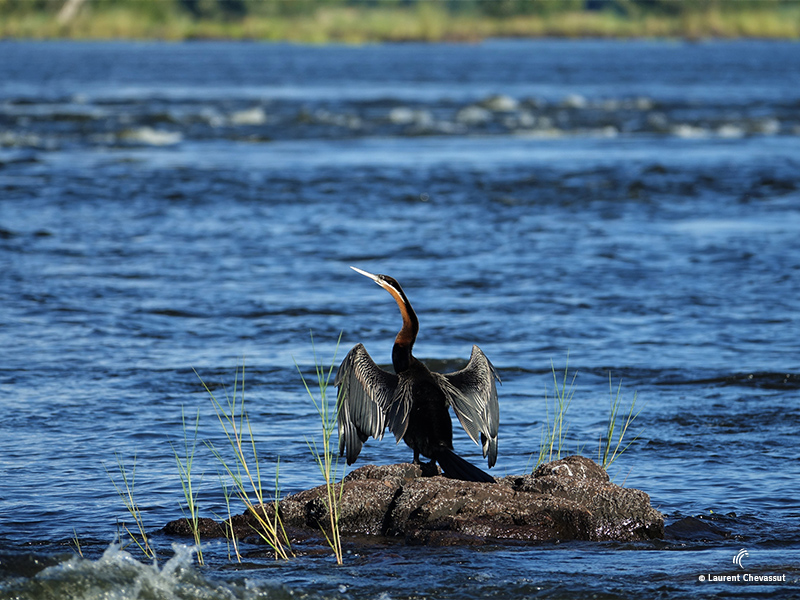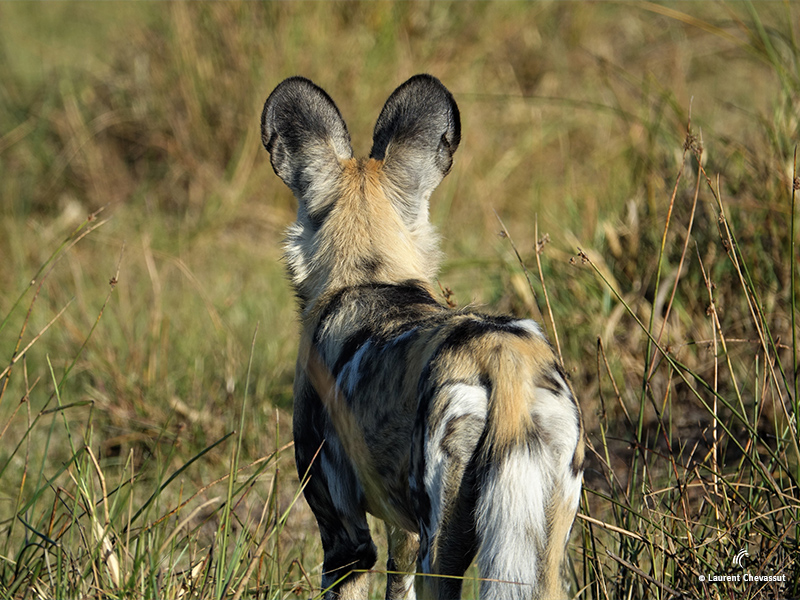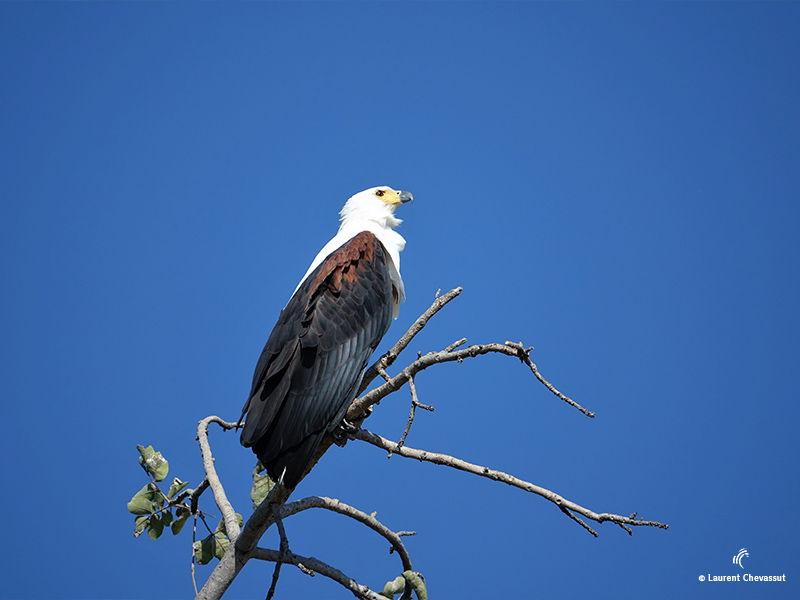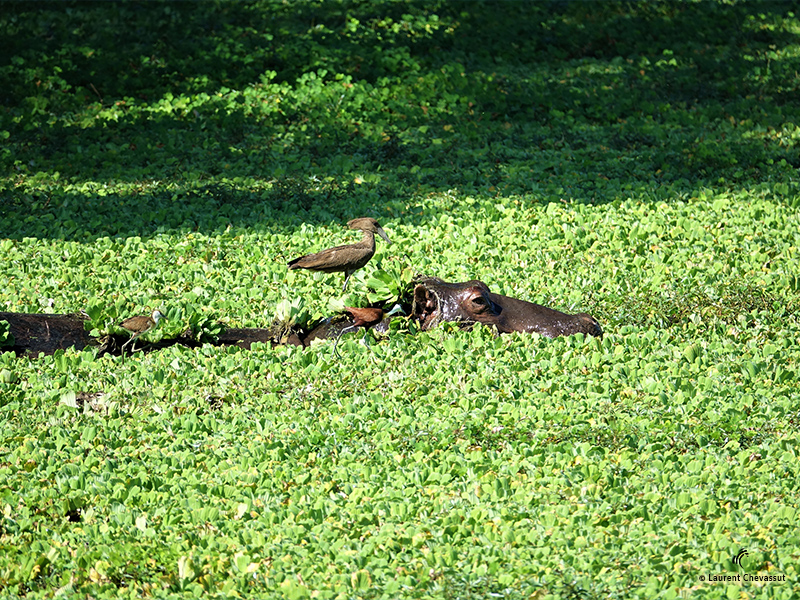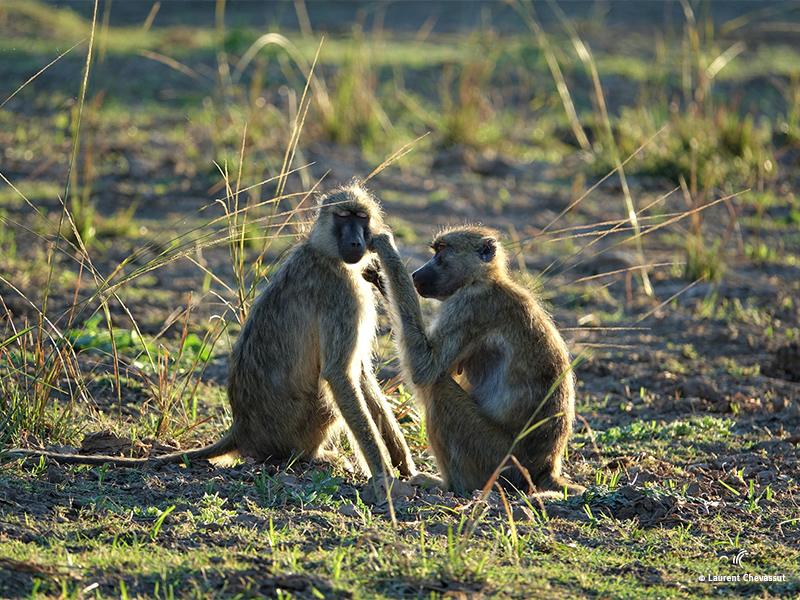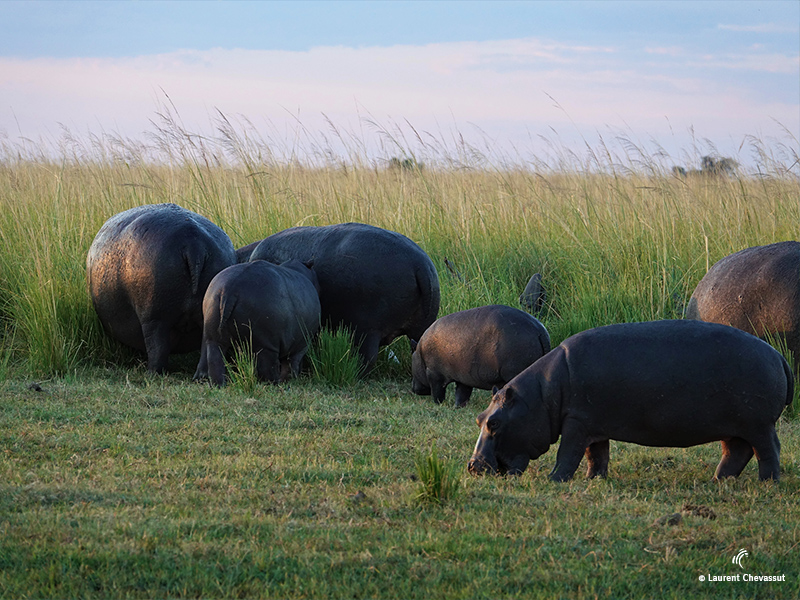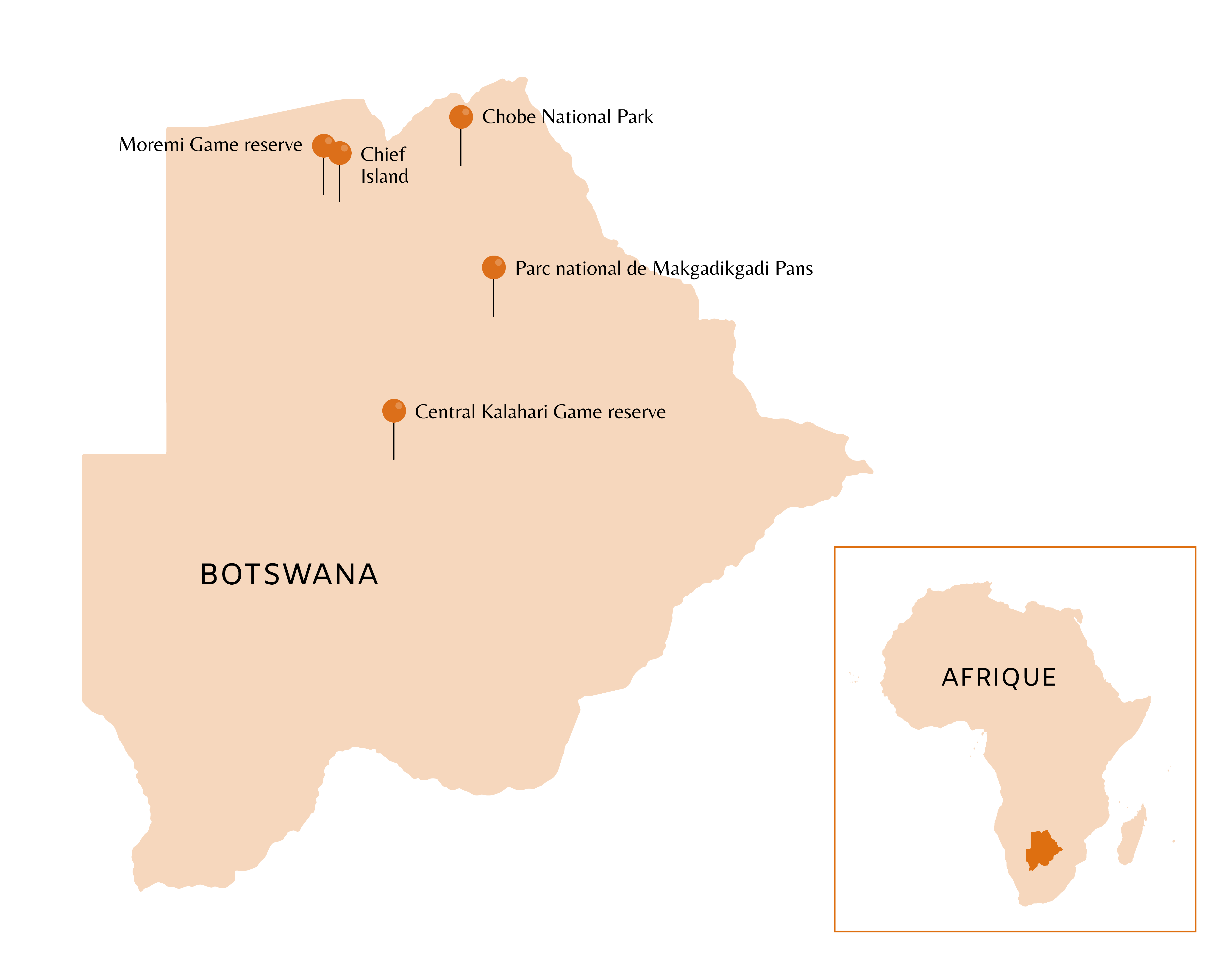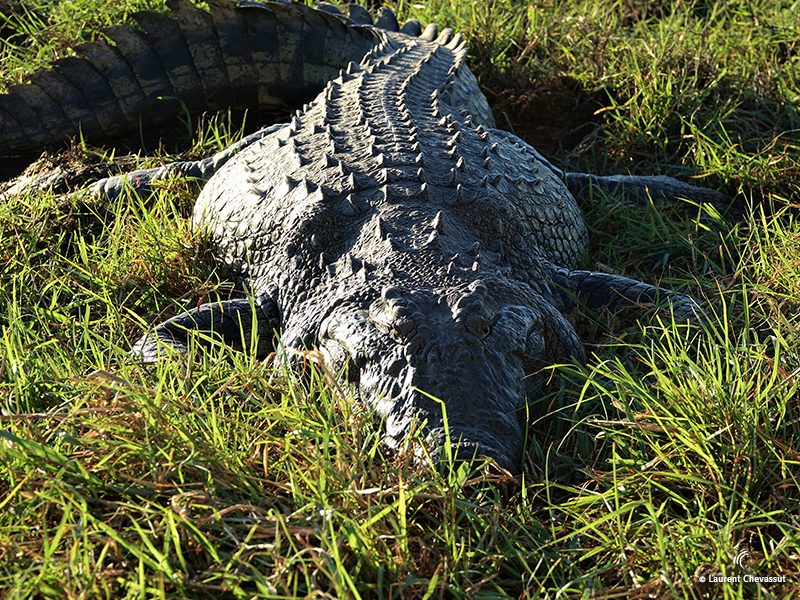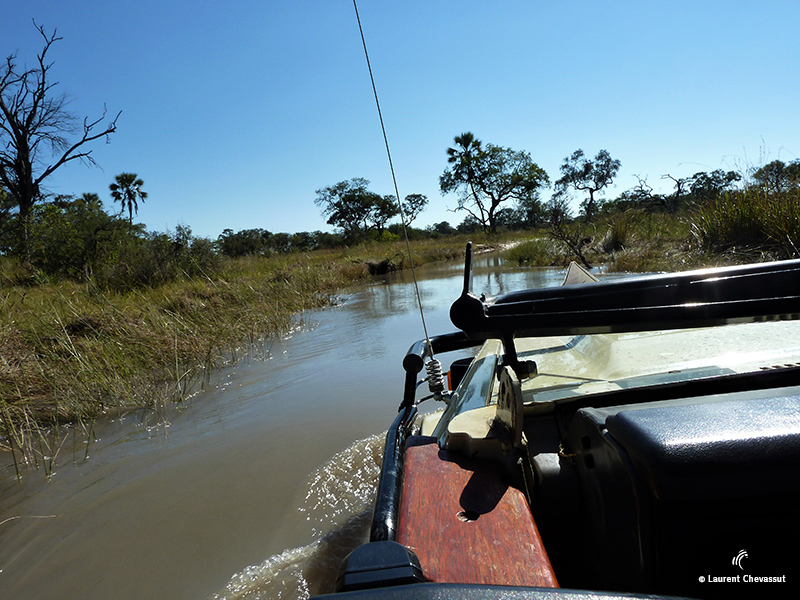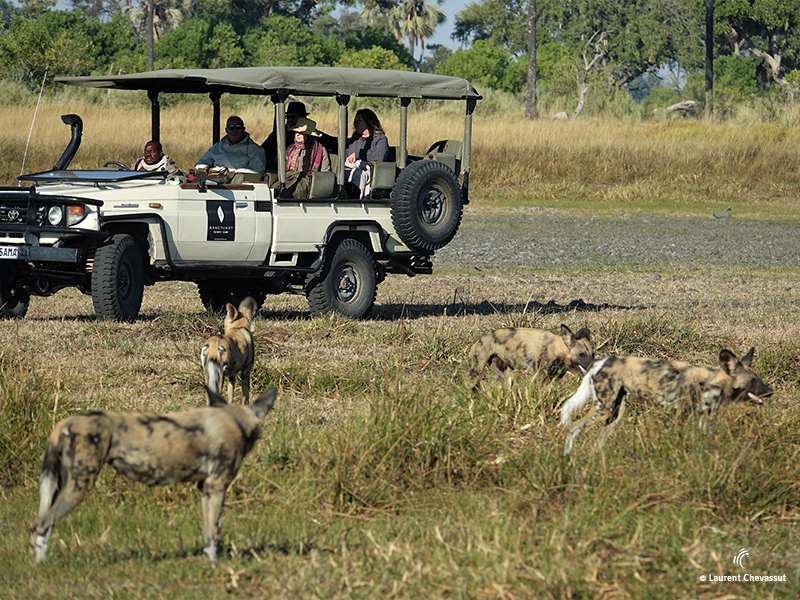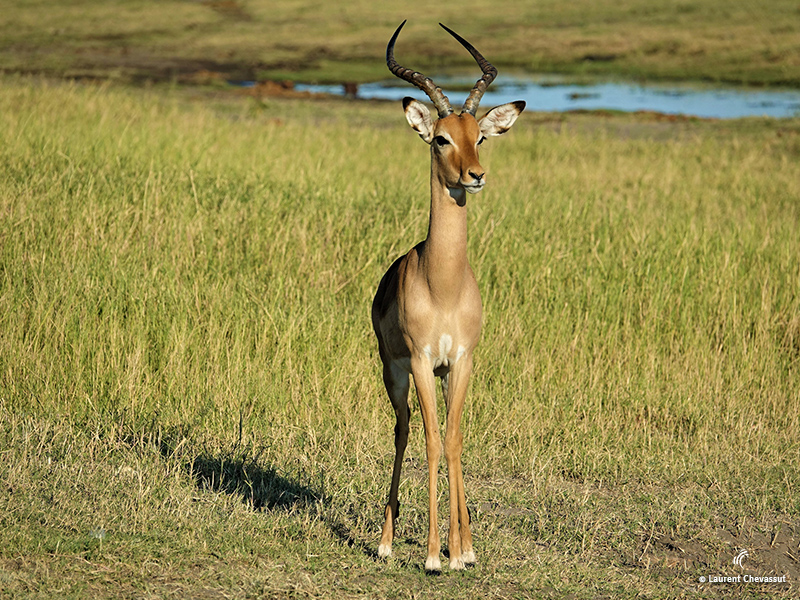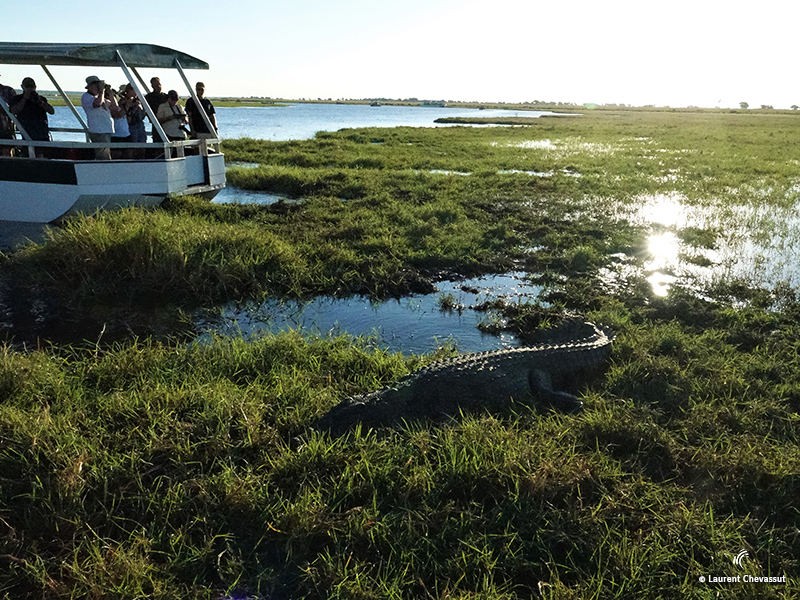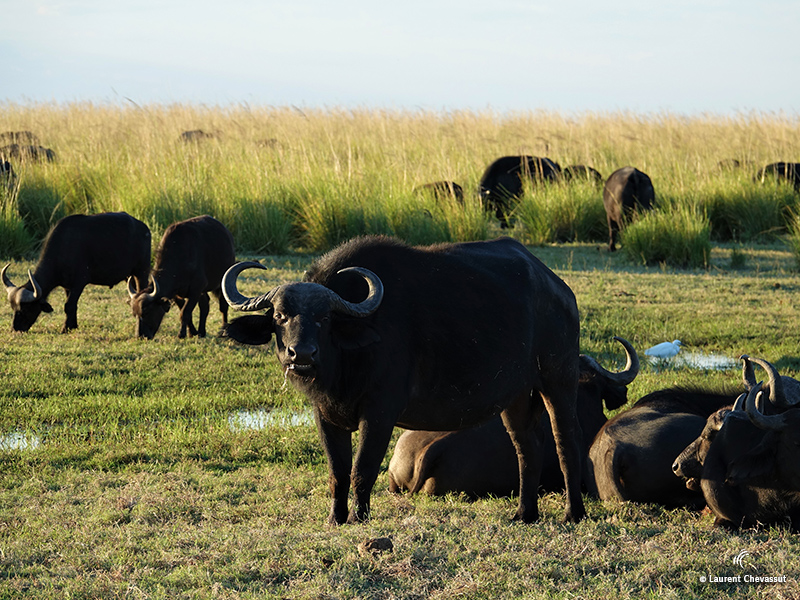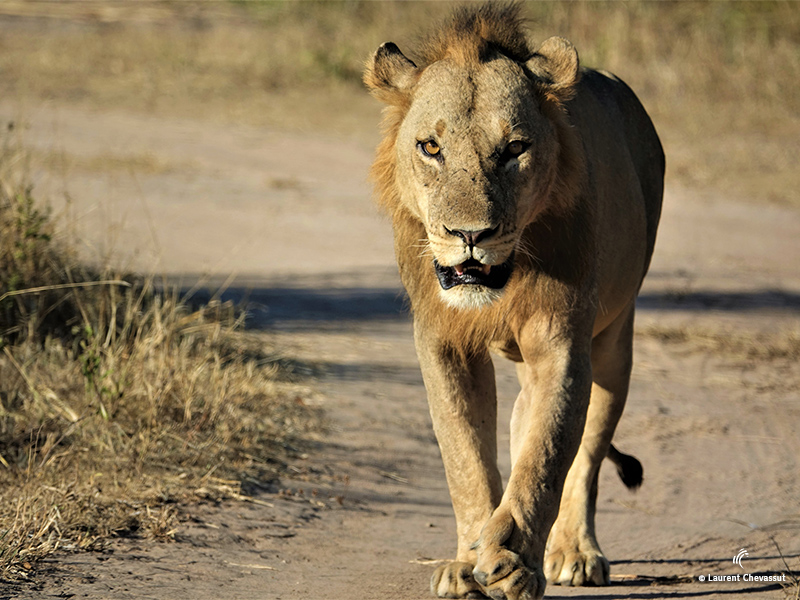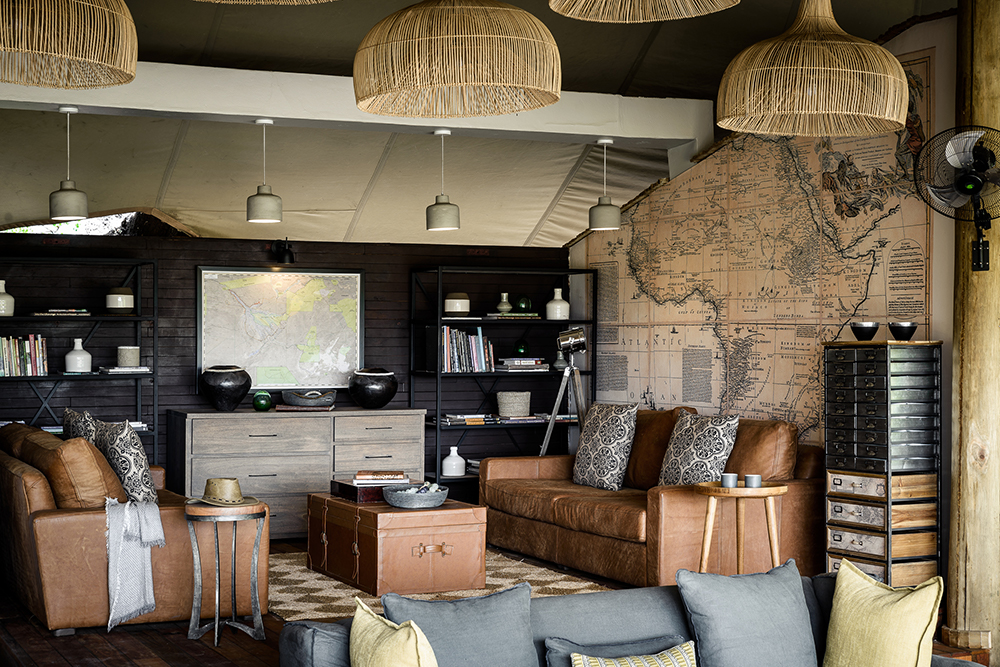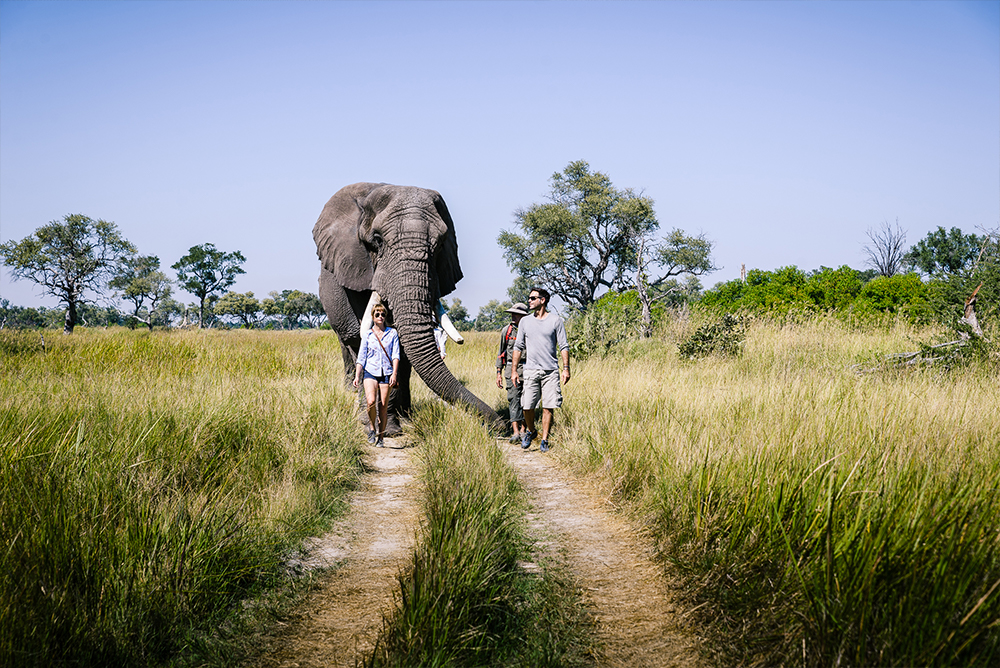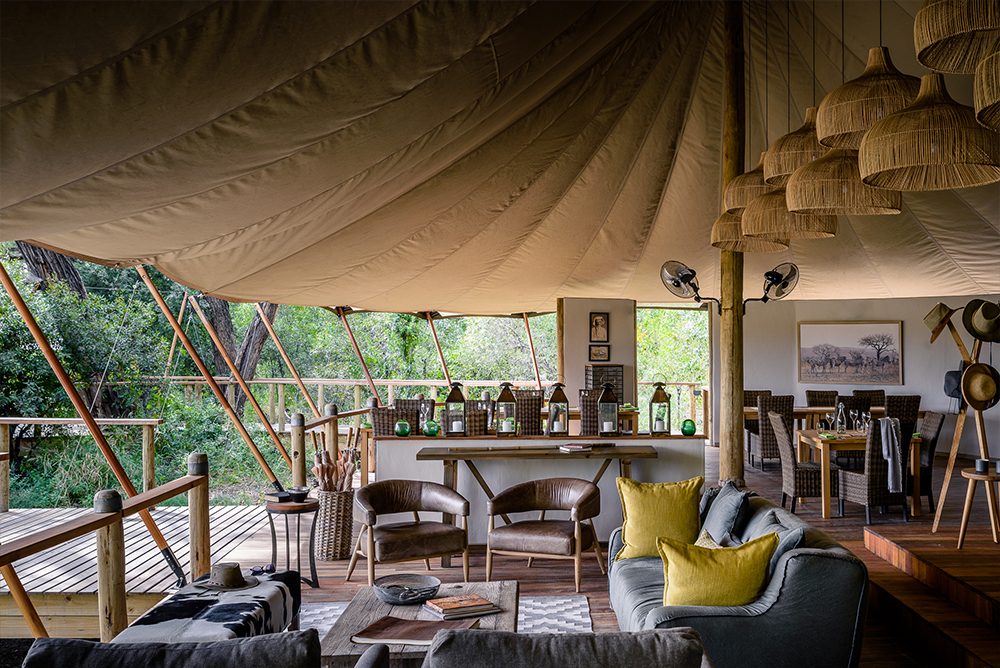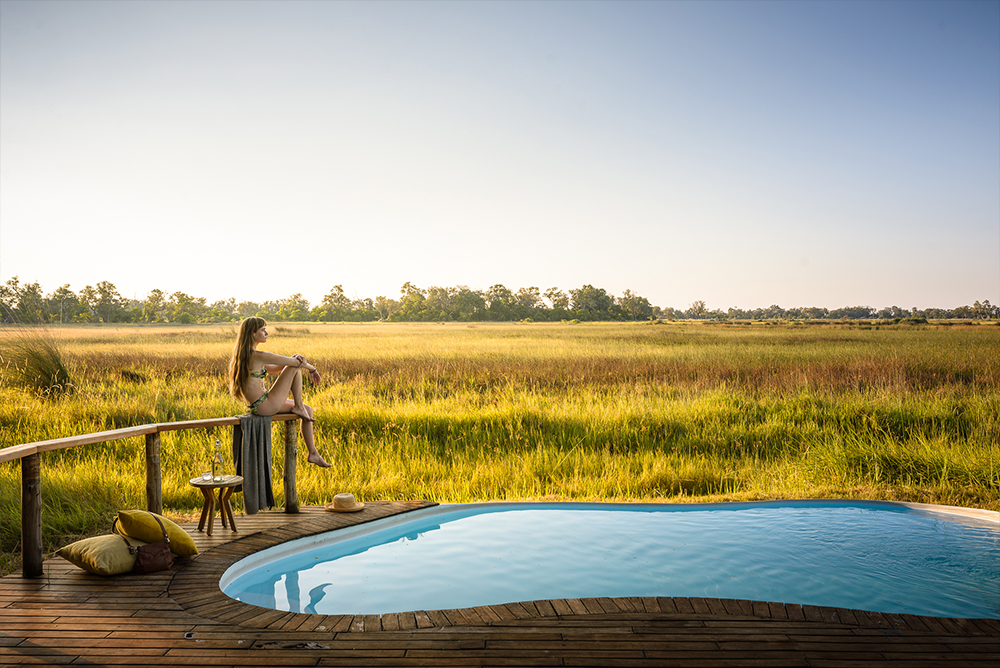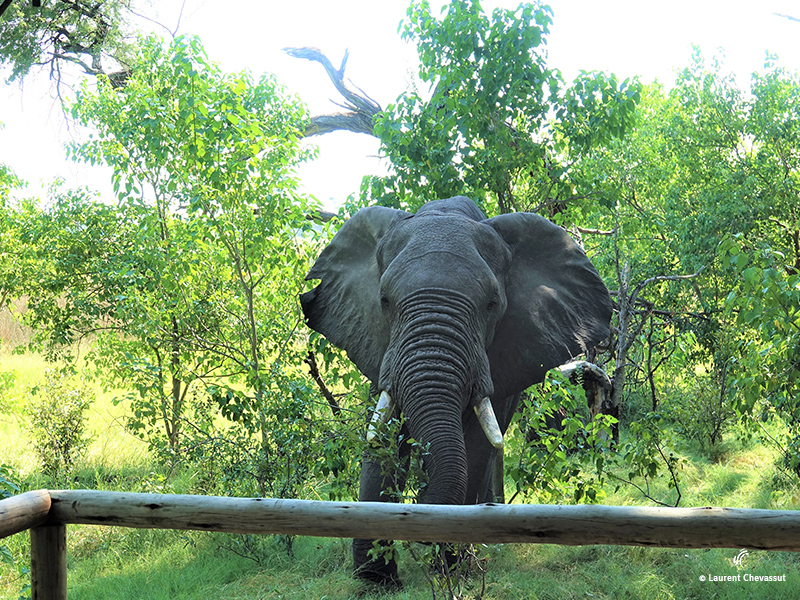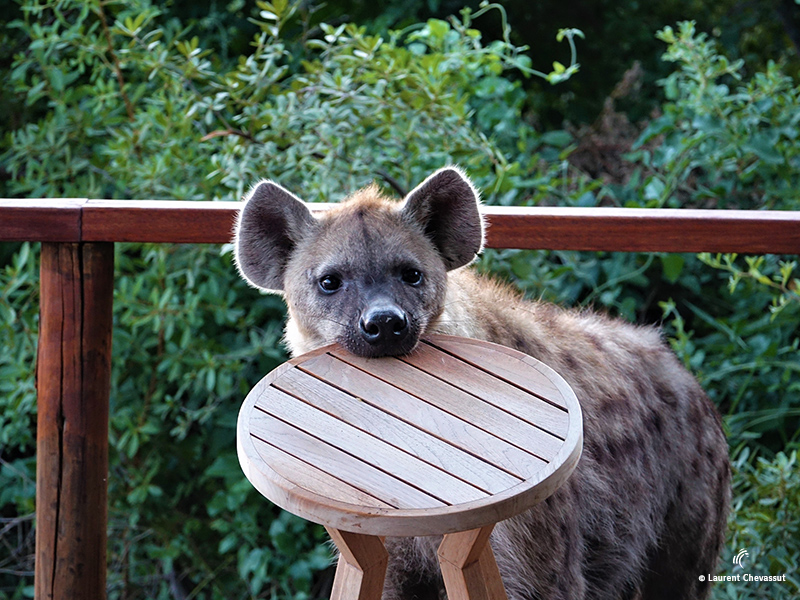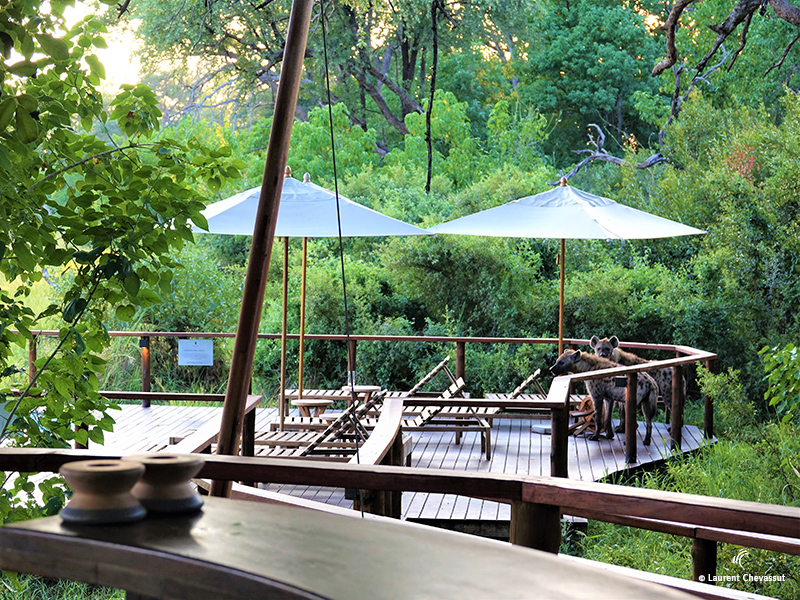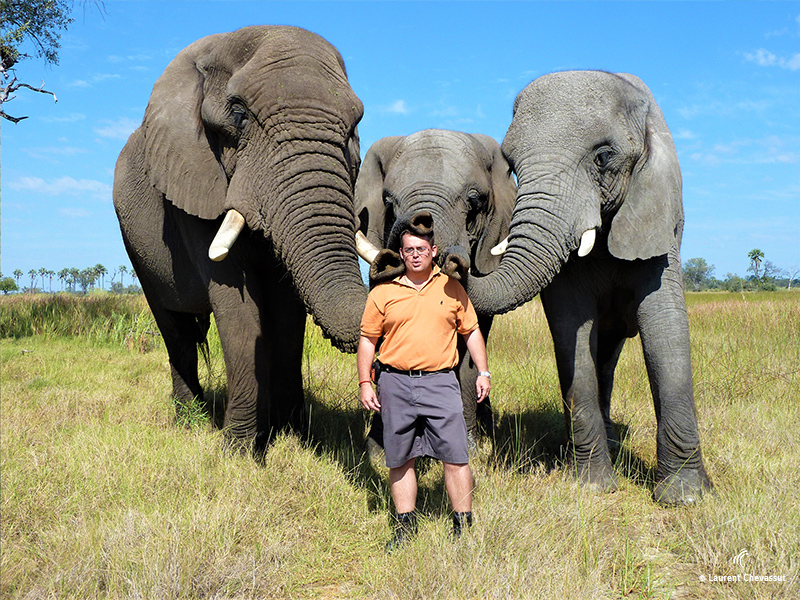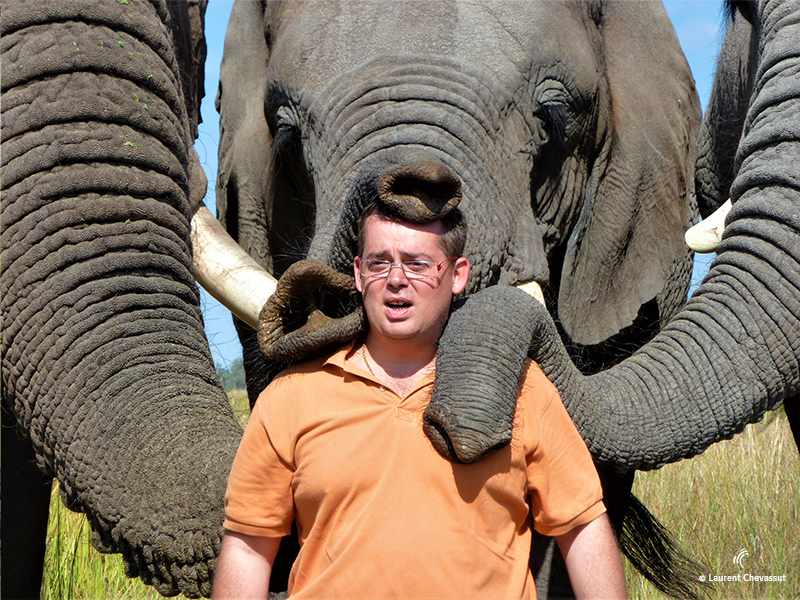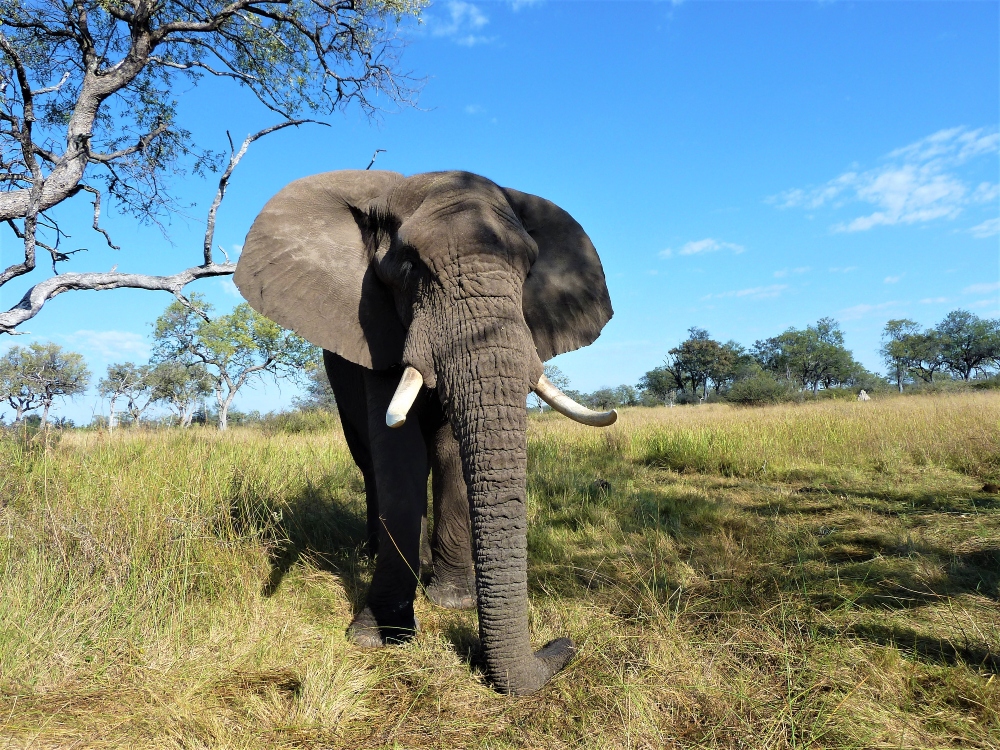If the expression “the first mornings of the world” means anything to you, you can’t miss an experience in the middle of the Bush, rocked by the first rays of the sun.
A sensation of the dawn of humanity where each animal species waits its turn to manifest its presence in this paradisiacal environment. Wake up the adventurer in you on a Botswana safari!
Good to know :
Botswana is a wild country but is unfortunately not suitable for children under the age of 16.
The proximity of predators and certain hunting scenes could offend their sensitivity..
In the heart of the savannah, explore the country’s wildlife and unspoilt open spaces by 4×4 canoe or even on foot. Observe the wild animals and live in communion with nature.
Botswana is the jewel of southern Africa, with 40% of its land still left to wildlife.
You can’t help but be impressed by the magnificent sunsets over the savannah, a glass of your favourite drink in your hand, surrounded by elephants crossing the swampy areas of the Okavango Delta .
When to go :
The best time to discover Botswana is from March to November. A very high season from June to September in the dry season makes it easier to observe the wildlife, and the rise of the delta waters usually arrives at the end of April. March and November remain wonderful for those who want to have fun on a more reasonable budget.
Our favourites
Chief Island
The largest island in the Okavango Delta, Chief Island (70 km long and 15 km wide) is so named because it was once the local chief’s only hunting reserve.
Raised above the water level by tectonic activity and giant termite mounds, it is here that much of the delta’s wildlife recedes as the water level rises.
As such, the island is home to what may be the richest concentration of wildlife in Botswana.
This is the Okavango Delta as you always imagined it to be. Swamps lined with reeds, meadows and open forests provide a spectacle worthy of a wildlife documentary.
Unsurprisingly, the island is home to some of the most exclusive lodges and tent camps in Africa.
Moremi Game reserve
Welcome to the oldest protected section of the Okavango Delta in Botswana.
The explorer David Livingstone left the Moremi area in 1848. One hundred years after the explorer described it as “a land full of rivers”, the environment and wildlife of the Moremi area were under threat.
It was thanks to the bold and local Batawana people that the area was proclaimed a Moremi Game Reserve in 1963, making it the oldest and first protected reserve in the Okavango Delta. As a sign of gratitude, the reserve is named after the Batawana tribe members, Chief Moremi III and his wife.
Now it is one of the most diverse reserves with surprises everywhere, even for the most seasoned African traveller.
The Moremi Reserve protects the central and eastern areas of the Okavango Delta. By combining drier areas and watercourses, the contrasts are astonishing. Imagine views of wildlife, savannah around the rivers, where elephants and hippos splashing in the lagoons.
Often referred to as the ‘Garden of Eden’, the Moremi Reserve offers excellent wildlife viewing all year round and superb landscapes of savannah, floodplains, winding rivers, lagoons, dense forests (where leopards and wild dogs hide).
Take the opportunity to place the entire Big Five in front of your camera lens; Elephants, hippos, buffalos, blue wildebeest, impalas, red lechwe, giraffes, impalas – they all love to take a dip in the fresh waters of Moremi.
Don’t forget to look up: the shy cheetah likes to drag its fresh kill up the trees to enjoy its meal without being disturbed.
The Moremi Reserve will guarantee you an unforgettable African experience in the most natural and unspoilt way possible.
Chobe National Park
One of the best national parks in Botswana. This unique national park offers a variety of safari experiences amidst an abundance of wildlife.
A wide choice of lodges allows you to select a level of price and comfort to suit your budget.
Bordering the Chobé River which faces Namibia, you can vary the type of safari for an even more rewarding experience.
Whether it’s a 4×4 safari to observe lions hunting large herds, you can’t miss out on a boat safari at sunset. Indeed the animals are very close to you, taking your boat for a floating stump.
When the water level is high it is not uncommon to see elephants swimming or eating almost completely submerged a few metres from your boat.
Finally it is a paradise for bird lovers nesting along the river, or perched on buffaloes offering pictures of all kinds of beauty.
The only drawback is that the park is only accessible in one day from the Victoria Falls, and the success of this park does not make it stand out in the high season due to over-visitation.
Central Kalahari Game reserve
It is the largest and by far the most remote reserve in Southern Africa.
It covers an area of 52,000 km2 and makes the central kalahari the second largest reserve in the world. In Botswana, local operators call the Central Kalahari “CKGR”.
The vastness of the Central Kalahari Desert is overwhelming on your first visit and every visitor should be well prepared.
Knowledge of the park is necessary and well-maintained and well-equipped vehicles are essential to the smooth running of your Safari.
It is therefore very unwise to travel alone in the centre of the Kalahari and a guided safari is highly recommended.
Visiting the Central Kalahari requires careful planning and a good knowledge of the area as you need to know how to plan ahead:
The necessary fuel supply
The right amount of water for drinking, washing, cleaning and must be properly transported.
Good recovery equipment for your vehicle
Adapted and rationed food
Adapted camping equipment
If you are looking for a piece of paradise far away from mass tourism, you have found it.
A special feature of this park is that it is ideal in the rainy season if you only have December to March to go to Botswana. In the dry season it is more difficult to see elephants that have come close to the river to the north or to the Delta.
All those in the know have read Mark and Delia Owens’ book, the Kalahari Cry, which tells the story of their adventures in Deception pan in the 1970s.
Parc national de Makgadikgadi Pans
The Makgadikgadi Pans Reserve, a 3,900 km² salt water pond, is located in the middle of the dry savannah in north-eastern Botswana. It is one of the largest salt ponds in the world.
The Pan is all that remains of the old Makgadikgadi lake. Situated in the south-east of the Okavango Delta and surrounded by the Kalahari Desert, Makgadikgadi is technically not one Pan but many Pans with a sandy desert in between. The Pans themselves are salty deserts whose only plant life is a thin layer of blue-green algae and where very few wild animals can exist.
Here during the dry season the reserve is subject to warm, strong winds and only salt water.
But after the rain, the Pan becomes an important habitat for migratory animals such as wildebeest and one of the largest zebra populations in Africa, but also for the large predators that feed on them.
The rainy season also brings migratory birds such as ducks, geese and large white pelicans. Pan de Soa is home to one of the only two breeding populations of flamingos in southern Africa.
You will find mainly tent camps and lodges in this park.
Go on a bird watching safari, visit the Gweta, and attempt bush walks.
You will come across a wide variety of species such as moose, lion, zebra, cheetah, gemsbok, springbok, red hartebeest, bushbuck, giraffe, steenbok, elephant and many more.
Our Lodge Favourite: Sanctuary Stanley’s Camp
Situated on a private concession of 105,000 hectares, Stanley’s Camp provides an authentic ‘safari experience’.
Only 15 minutes by taxi plane from Maun, amidst ebony and sausage trees, the natural wonders of the area change constantly with the seasons.
The landscape changes from lush green when the rain falls on the Angolan highlands, to dry savannah when the neighbouring Kalahari Desert tightens its grip on the land.
Why choose this lodge ?
With the unique charm of a canvas camp in the middle of nature, its position on a private area guarantees you an exclusive safari far from the reserves open to the public.
Very affordable at the beginning and end of the season, the quality of its safaris has nothing to envy to the luxury Lodges as it is located in the same concession.
The lodge is so well integrated in its environment that the proximity with the animals is permanent.
My best encounters took place in Stanley’s.:
Each time I pass by, an elephant, which I recognise by the notch in its right ear, comes to visit me and communicates with me.
He stays a moment in front of my tent to listen to me talk. Something tells me that he too recognises me now…
Another morning Hyenas came to play with the tables and chairs of the swimming pool!
We had to run after them so they wouldn’t take them away!
If you want total immersion in the wilderness, Stanley Camp is your next safari experience. Among the activities on offer, such as the walking safari or the Mokoro, you will have a unique opportunity to spend a day with life-size elephants.
Doug and Sandy Groves have spent 30 years studying these fantastic animals and provided you with an extraordinary experience in the company of Jabu and Morula, two survivors of animal exploitation. Unfortunately, this activity is no longer possible since Doug passed away this year due to an accident, I invite you to help the association if you want this experience to continue.
and for more information about premium lodge in Botswana, see our dedicate page here : https://terres-sauvages.ch/en/experiences-2/premium/sanctuary-chiefs-camp-botswana/
